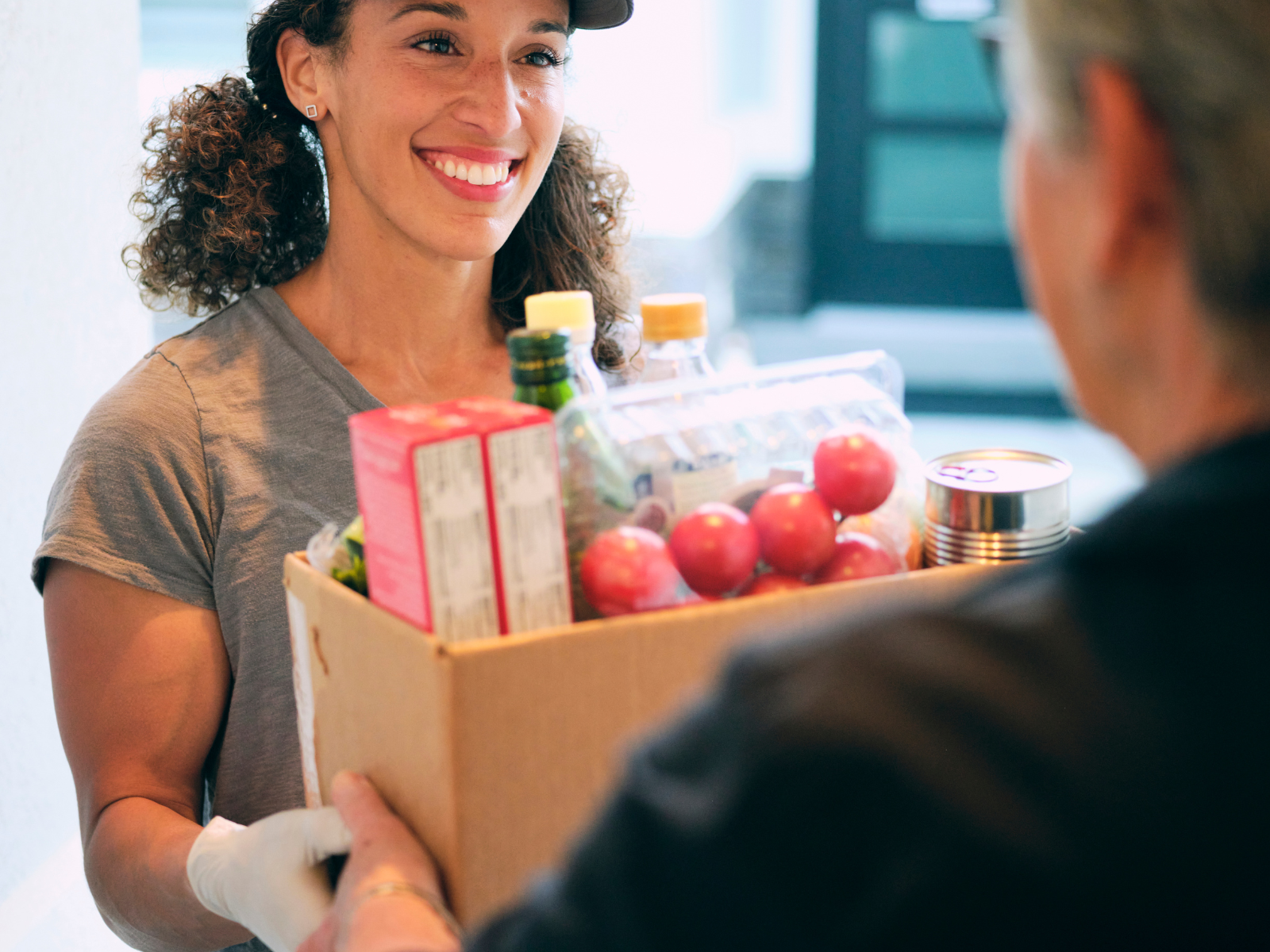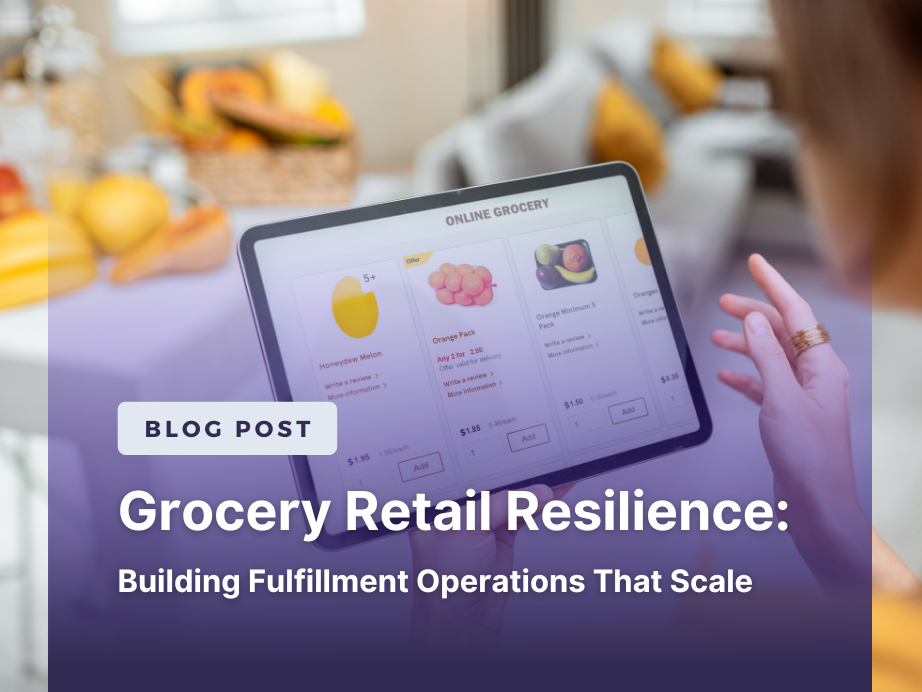Smarter Picking, Faster Fulfillment: How Express Multi‑Pick Transforms High-Velocity Food Operations

Introduction
In food fulfillment, speed isn’t just about hitting SLAs — it protects margins, keeps customer promises, and prevents team burnout.
For operators under pressure to deliver faster — from grocers and fresh food retailers to food distributors, restaurants, and rapid delivery platforms — the demands keep climbing. Customers expect near-instant delivery. SKUs are multiplying. Margins are razor-thin. Yet for many, the systems driving fulfillment haven’t evolved fast enough to meet today’s expectations.
Traditional picking workflows are one of the biggest culprits. In most operations, a single picker handles one order at a time. That’s fine when volumes are predictable, but it creates bottlenecks the moment demand accelerates. Even under normal conditions, this inefficiency drives up labor costs, increases rider wait times, and slows delivery promises.
This is where our multi-pick workflow helps close the gap. By enabling order stacking — allowing pickers to fulfill multiple orders simultaneously — operators improve units per hour (UPH), reduce picking costs, and unlock efficiencies that compound across every stage of fulfillment. For high‑velocity environments like grocery e‑commerce, meal marketplaces, and local delivery, the impact can be significant.
Every Segment Feels the Pressure Differently
Every operator experiences the fulfillment challenge in unique ways, but the baseline story is the same: rising demand, shrinking margins, and relentless expectations for speed and accuracy.
- Grocery & Fresh Food Retail: Online orders continue to rise, replenishment cycles are shorter, and accurate grocery inventory management is critical to prevent stockouts.
- Food Distributors: Balancing large B2B drops with smaller, high-frequency orders demands squeezing more efficiency from every run.
- Restaurants & QSRs: Surges from third-party delivery platforms require kitchens and pickers to keep pace with on-demand fulfillment without breaking workflows.
What’s changed isn’t just the spikes; it’s the baseline. If you promise delivery in 20 minutes or same-day turnaround, your fulfillment model has to deliver — consistently.

The Bottleneck: Where Traditional Picking Falls Short
If you’ve watched a picker running a single route per order, you’ve seen the inefficiency firsthand:
- Wasted travel paths reduce productivity.
- Low picker utilization drives up per-order costs.
- Disconnected handoffs between picking, packing, and delivery slow everything down.
This inefficiency isn’t just annoying—it’s expensive. According to industry research, batch picking can reduce picker travel time by up to 55%, increase pick rates by 40%, and lower fulfillment costs by 20–30%.
Express Multi‑Pick builds on this principle—combining batching with intelligent picking optimization designed for high‑velocity food operations.
How Express Multi‑Pick Works
At its core, the feature empowers a single picker to fulfill multiple orders in one optimized route. Here's how it works in practice: if three customers order bananas, milk, and bread, Express Multi-Pick routes the picker to dairy → produce → bakery once, collecting items for all three orders, rather than making three separate complete store loops.
Behind the scenes, the system dynamically stacks orders, optimizes pick paths to minimize duplicate passes and wasted motion, and syncs seamlessly with packing and delivery orchestration.
Key capabilities include:
- Dynamic order stacking: Groups orders by product overlap, fulfillment zones, and urgency to minimize redundant picker trips and maximize efficiency.
- Optimized pick paths: Streamlines routes by reducing duplicate passes through the same zones, helping pickers move more efficiently without requiring full store‑level mapping.
- Seamless integration: Syncs with inventory management systems, replenishment logic, and dispatch workflows to keep operations coordinated end‑to‑end.
- Delivery‑aware batching: Matches stacked orders to driver capacity and delivery routes, enabling efficient last‑mile fulfillment while reducing idle time for riders.
This isn’t about handling exceptions—it’s about raising the baseline. From micro-fulfillment centers to multi-store networks, it enables teams to do more with the same resources every single day.
Real-World Impact: Efficiency That Compounds
Express Multi‑Pick solves two critical problems: fulfillment speed and cost control.
Faster SLAs, Higher UPH
By reducing picker travel time and increasing throughput, more orders leave the floor faster. Retailers improve on-time delivery performance without compromising accuracy.
Lower Picking & Delivery Costs
Stacking reduces both labor spend and last-mile costs. In fact, retailers leveraging batching see savings of up to 30% per delivery while maintaining reliability.
Better Use of Fleet Resources
Aligning stacking logic with driver routes eliminates underloaded runs and wasted miles, critical for models promising on-demand fulfillment.
Improved Stability Under Pressure
When sudden demand bursts happen—a Friday dinner rush or multi-order promo—operations don’t break under load. Systems flex to maintain SLA performance.
.png)
Where Express Multi‑Pick Fits Across the ICP
Every operator in high‑velocity food fulfillment feels the pressure differently, but the challenge is universal: balancing speed, accuracy, and efficiency without breaking workflows.
Grocery & Fresh Food Retail
Online orders are rising fast, same‑day expectations are now standard, and shelf inventory can shift hourly. Express Multi‑Pick enables teams to fulfill multiple customer orders per picker while maintaining grocery inventory accuracy and keeping high‑demand SKUs moving.
Food Distributors
Distributors juggle large B2B commitments with smaller, high‑frequency drops. Stacking these smaller orders into optimized routes reduces total stops, mileage, and fuel costs while preserving delivery timelines.
Restaurants & Delivery Platforms
From Friday dinner spikes to on‑demand surges, kitchen workflows and delivery capacity must stay in sync. Express Multi‑Pick matches batching to driver capacity, reducing rider wait times and cutting overall delivery windows for platforms like Uber Eats or DoorDash.
Rapid Delivery / Quick Commerce Platforms
Operators running dark stores or micro‑fulfillment centers — where sub‑30‑minute delivery promises are the norm — benefit directly from Express Multi‑Pick. By stacking orders dynamically and syncing batches with single‑driver dispatch, platforms can increase UPH, reduce rider idle time, and control last‑mile costs without adding headcount.
By enabling dynamic order stacking and aligning pick‑pack‑dispatch workflows, Express Multi‑Pick helps operators across all segments handle both day‑to‑day volumes efficiently and sudden bursts of demand without compromising SLAs or accuracy.
.png)
Why It Matters Now
The shift to on-demand commerce has raised the bar for operational efficiency, and customer expectations are higher than ever.
You can’t scale order volume without scaling efficiency. For high-velocity food operators, this workflow supports that need by helping you:
- Improve units per hour (UPH) without adding headcount
- Lower per-order picking and delivery costs
- Deliver a better customer experience with predictable SLAs
And the stakes keep getting higher: the global on-demand delivery market is expected to reach $225 billion by 2030 (18.1% CAGR). At the same time, the online grocery delivery sector is projected to grow from $0.75 trillion in 2025 to over $2 trillion by 2030 (22.25% CAGR).
For operators across grocery, food distribution, restaurants, and rapid delivery platforms, one thing is clear: volume is only going up. Tools like Express Multi‑Pick help you keep pace, boosting efficiency without sacrificing accuracy or margins.
Final Thoughts
Express Multi‑Pick plays an important role in helping high‑velocity food operators improve efficiency where it matters most. By supporting faster picks, reducing delivery wait times, and enabling teams to handle more orders without adding headcount, it strengthens overall fulfillment performance.
It integrates seamlessly with tools like replenishment, inventory management, and delivery coordination, making it easier to build efficient, scalable systems that keep up with today’s on‑demand world.
Ready to see it in action? Contact us today to learn how OrderGrid helps operators build smarter, more efficient fulfillment systems designed for today’s on‑demand world.
You might also like


.png)

.png)
